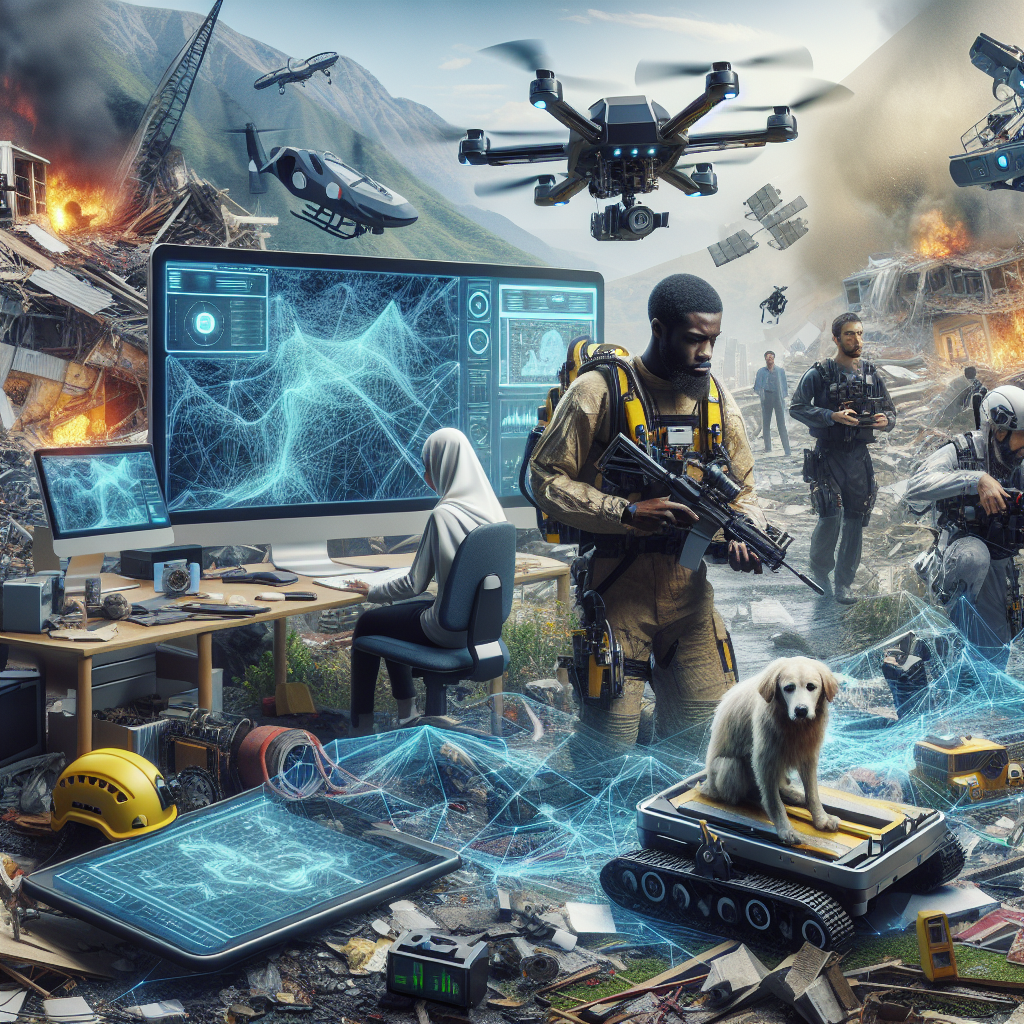Artificial Intelligence (AI) has the potential to revolutionize disaster response and recovery efforts in ways that were previously unimaginable. From predicting natural disasters to assisting in search and rescue operations, AI technologies are being increasingly utilized to minimize the impact of disasters and help communities recover more quickly. In this article, we will explore the various ways in which AI can be leveraged in disaster response and recovery efforts, as well as address some common questions about this emerging field.
Predicting and Monitoring Disasters
One of the key areas where AI is making a significant impact in disaster response is in predicting and monitoring natural disasters. By analyzing large amounts of data from satellites, weather stations, and other sources, AI algorithms can help predict the likelihood and severity of disasters such as hurricanes, earthquakes, and wildfires. This early warning system enables authorities to take proactive measures to evacuate people from at-risk areas and deploy resources to the areas most likely to be affected.
For example, in the case of hurricanes, AI algorithms can analyze data on wind speed, temperature, and pressure to predict the path and intensity of the storm. This information can help authorities make informed decisions about where to evacuate people and where to position emergency response teams. Similarly, AI can analyze seismic data to predict the likelihood of earthquakes and tsunamis, allowing authorities to prepare for these events and reduce their impact.
Search and Rescue Operations
AI technologies are also playing a crucial role in search and rescue operations following a disaster. For example, drones equipped with AI algorithms can be used to quickly survey damaged areas and identify people who may be trapped or in need of help. These drones can fly over disaster zones, collect images and videos, and transmit this information to emergency response teams on the ground in real-time.
In addition, AI-powered robots can be deployed to navigate through rubble and debris to locate survivors and deliver essential supplies. These robots are equipped with sensors and cameras that enable them to detect heat signatures, sounds, and movement, allowing them to identify and assist people in need. By using AI-powered drones and robots, search and rescue teams can cover larger areas more quickly and efficiently, increasing the chances of finding survivors and saving lives.
Data Analysis and Decision-Making
Another important application of AI in disaster response and recovery is in data analysis and decision-making. AI algorithms can analyze vast amounts of data from various sources, including social media, news reports, and satellite imagery, to provide real-time insights into the impact of a disaster and the needs of affected communities. This information can help authorities prioritize response efforts, allocate resources effectively, and coordinate relief efforts with other organizations.
For example, AI can analyze social media posts to identify areas where people are requesting help or where supplies are urgently needed. This information can be used to deploy resources to these areas quickly and efficiently, ensuring that help reaches those who need it most. AI can also analyze satellite imagery to assess the extent of damage caused by a disaster and identify areas that require immediate attention, such as collapsed buildings or flooded neighborhoods.
Community Resilience and Recovery
In addition to aiding in the immediate response to disasters, AI technologies can also play a key role in helping communities recover and rebuild in the aftermath of a disaster. By analyzing data on infrastructure damage, population displacement, and economic impact, AI algorithms can help authorities develop recovery plans that address the specific needs of each community.
For example, AI can analyze data on the availability of housing, healthcare, and other essential services to identify gaps in the recovery process and prioritize resources accordingly. AI can also help authorities assess the long-term impact of a disaster on the economy and develop strategies to stimulate growth and create jobs in affected areas. By using AI to inform recovery efforts, communities can bounce back more quickly and become more resilient to future disasters.
Common FAQs about AI in Disaster Response and Recovery
Q: How accurate are AI predictions of natural disasters?
A: AI predictions of natural disasters are constantly improving as algorithms become more sophisticated and data sources become more reliable. While no prediction system is 100% accurate, AI can provide valuable insights into the likelihood and severity of disasters, enabling authorities to take proactive measures to mitigate their impact.
Q: How can AI help in search and rescue operations?
A: AI can help in search and rescue operations by enabling drones and robots to quickly survey disaster zones, identify survivors, and deliver essential supplies. AI algorithms can analyze data from sensors and cameras to detect heat signatures, sounds, and movement, helping search and rescue teams locate people in need more efficiently.
Q: How does AI assist in decision-making during a disaster?
A: AI assists in decision-making during a disaster by analyzing real-time data from various sources to provide insights into the impact of the disaster and the needs of affected communities. This information helps authorities prioritize response efforts, allocate resources effectively, and coordinate relief efforts with other organizations.
Q: How can AI help communities recover from a disaster?
A: AI can help communities recover from a disaster by analyzing data on infrastructure damage, population displacement, and economic impact to inform recovery plans. AI algorithms can identify gaps in the recovery process and prioritize resources to address the specific needs of each community, enabling them to bounce back more quickly and become more resilient to future disasters.
In conclusion, AI has the potential to revolutionize disaster response and recovery efforts by predicting and monitoring disasters, aiding in search and rescue operations, analyzing data and informing decision-making, and helping communities recover and rebuild. As AI technologies continue to evolve and become more advanced, the possibilities for their use in disaster response are limitless. By harnessing the power of AI, we can better prepare for and respond to disasters, ultimately saving lives and rebuilding communities more effectively.

